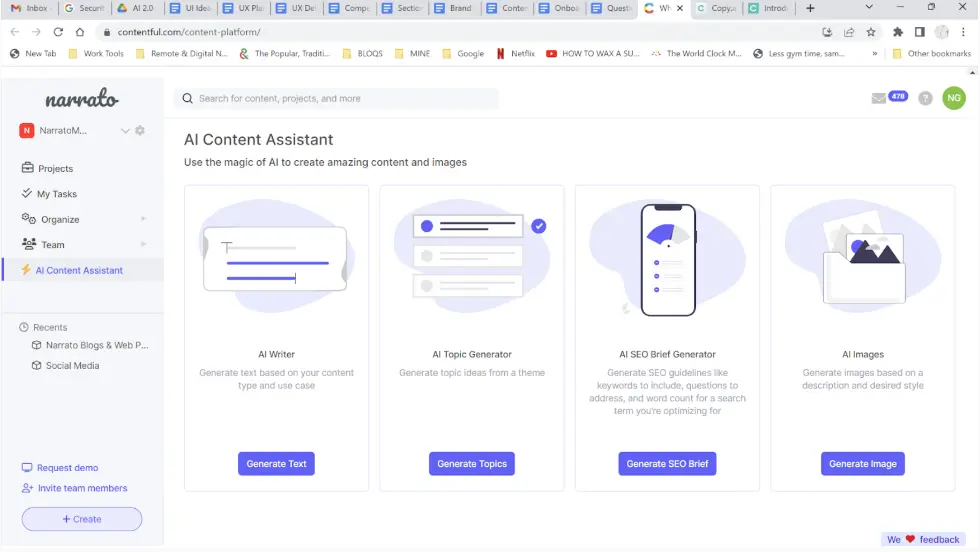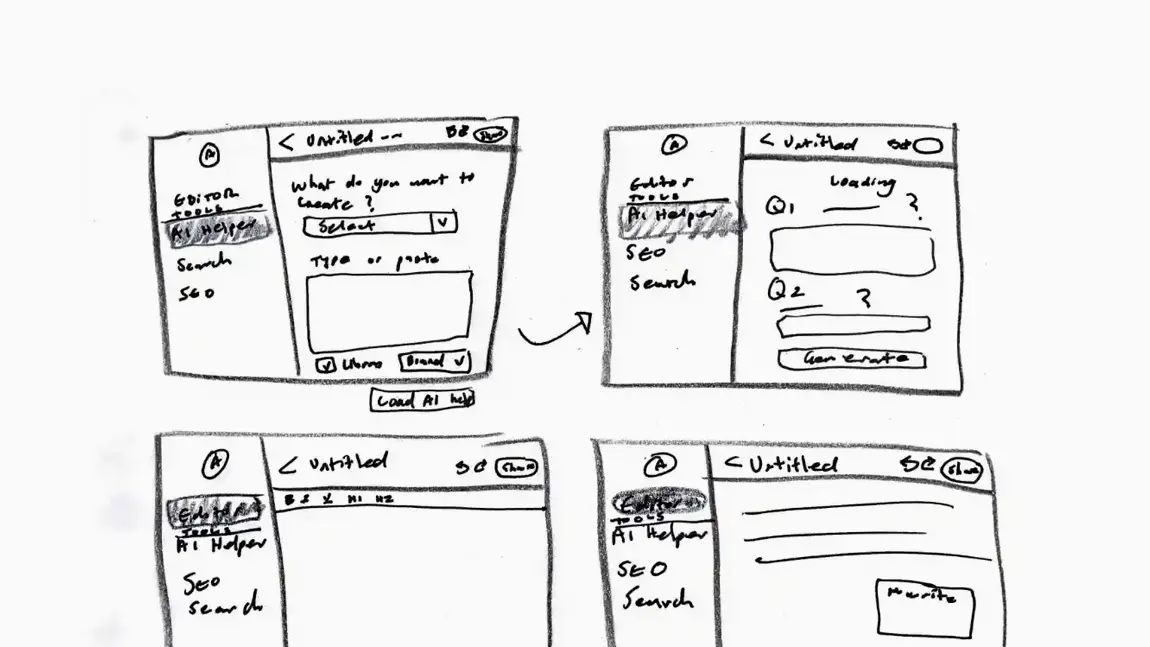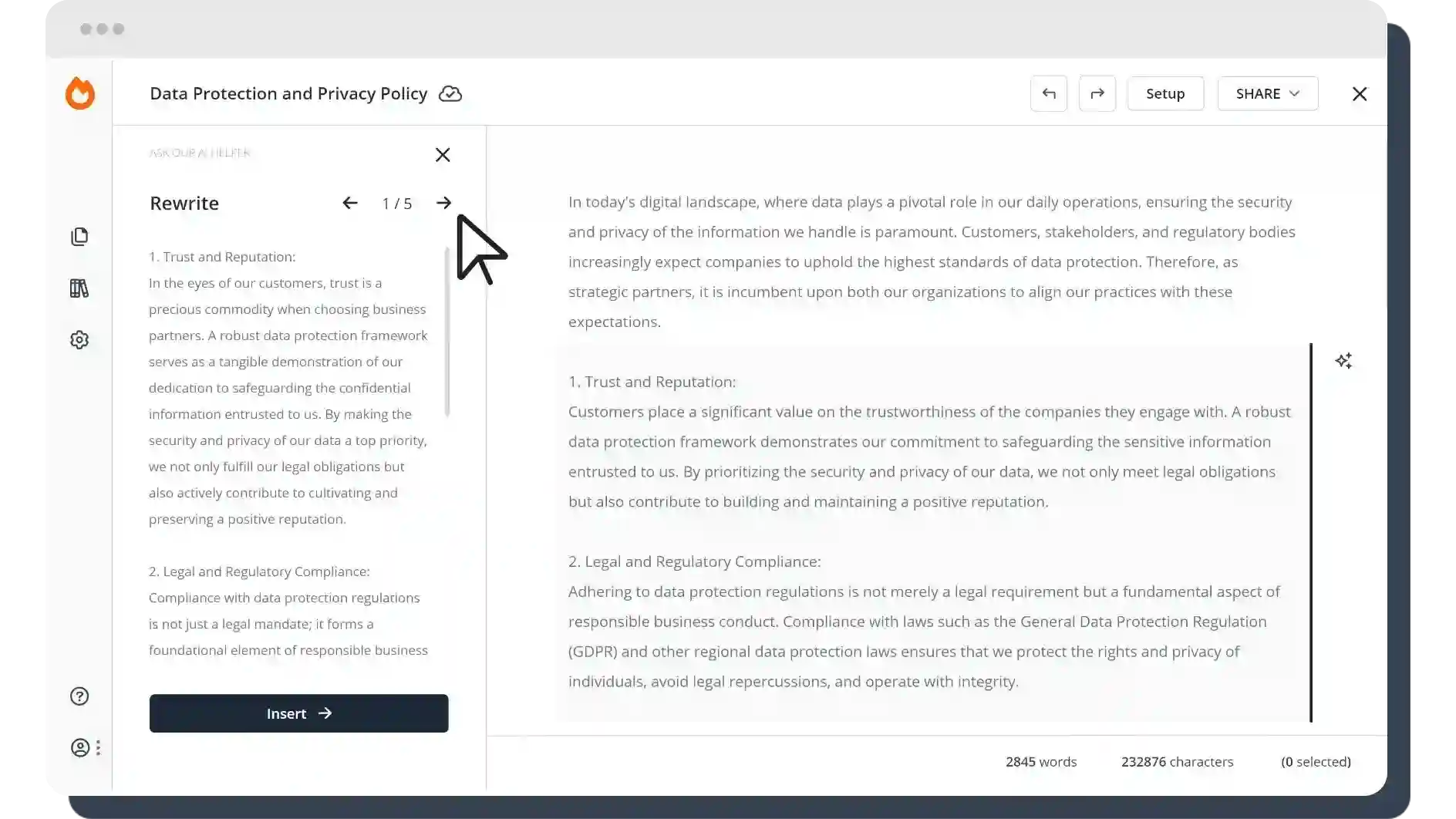This project focused on designing an AI-powered content creation and storage platform for a web development client serving small and medium-sized businesses (SMBs). The platform aimed to
streamline content production by combining generative AI with a structured content library—enabling users to create, reuse, and refine marketing assets with minimal effort.
I led the UX/UI design over a fast-paced one-month timeline, collaborating closely with a distributed team across South Africa, India, and the US to define core functionality, simplify
complex workflows, and deliver a design ready for development. stream.













